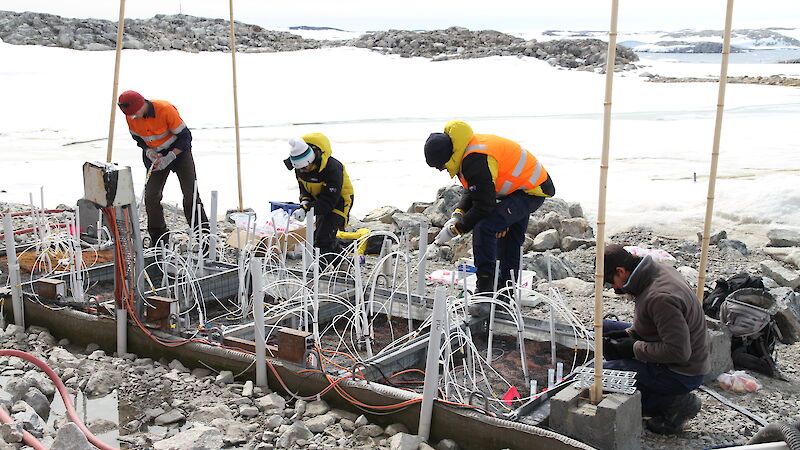In the mid 1990s we commenced a series of studies in the vicinity of Australia’s Casey station to understand the impacts of abandoned waste sites and how they may be removed without causing further problems. This area was chosen because it includes two old stations (Wilkes, occupied from 1957–69, and Old Casey, 1969–88) and their waste disposal sites, as well as the currently occupied new Casey station (1988–present). The Thala Valley waste site near Old Casey has been disturbed by several recent clean-up attempts, and can therefore be compared with the undisturbed waste site near Wilkes.
Understanding and managing contaminated sites in Antarctica is challenged by the very nature of the environment. The extreme cold of Antarctica locks up the water on land as snow and ice for much of the year and leads to the immobilisation of terrestrial contaminants. However, for a brief period during most summers, snow and ice slowly melt and water flows freely, releasing the contaminants as a pulse of contamination. Most Antarctic stations (and their waste sites) are located on the coast and therefore the adjacent marine environment is likely to be directly or indirectly affected by this contaminated run-off. For this reason, much of our research is concentrating on the type and extent of impacts that might be evident in the adjacent bays.
The cold also freezes the surface of the sea for most of the year and brings biological activity in the water and on the seabed to a virtual stand-still. The summer melt also clears the sea ice, opening up the water and seabed to sunlight and triggering a burst of biological activity. Thus the main period of mobilisation of contaminants from the land coincides with the main period of feeding and growth in the adjacent sea.
To understand the physical behaviour of contaminants in the Antarctic we have examined their concentrations at various depths through the soil profile in disturbed and undisturbed locations in the refuse tips, in the path of melt-water streams, and in adjacent marine sediments. We have also deployed sediment traps, current meters and drogues to help understand dispersion of contaminants under sea ice and in open water. Ongoing geochemical research is identifying the processes involved with contaminant movement in soil and water, and the physical extent of contamination associated with the waste tip sites.
Our results indicate that many chemicals are present in quantities that exceed the natural levels in the environment, and that a few chemicals are present in levels that would trigger compulsory remediation if they were in Australia. However, we do not know the relative sensitivity of Antarctic species and their response to such contaminant levels.
Research into the impacts on marine ecosystems, ecotoxicology, and the response of local biota to a range of common contaminants, including metals and fuels, is ongoing. This research will help us determine whether environmental standards developed for other regions of the world are appropriate for the specific conditions found in Antarctica.

